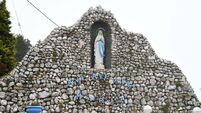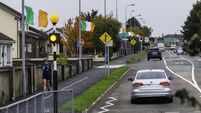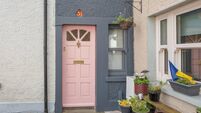Our heritage sites are world class
Yet, we have just three World Heritage Sites. There are 812 such sites around the globe and, given our ancient history and thousands of archaeological remains, surely we could many more.
Bru na Boinne, in Co Meath, and Skellig Michael, off the south Kerry coast, are World Heritage Sites in the Republic, with the Giant’s Causeway, in Co Antrim, being among seven UK designated sites.
World Heritage Site status lands a place in exalted company — up there with the likes of the Great Wall of China, Stonehenge, the Pyramids of Egypt and Yellowstone National Park. It’s a case of reaching the very top: an Olympic gold medal in heritage terms.
Surprisingly, the Rock of Cashel, our most visited heritage site, is not included. A strong case could be made for the Co Tipperary attraction and for several others, including The Burren, Clonmacnoise and Killarney National Park, to mention just a handful.
A credible argument could also be made for Connemara and the Aran Islands. Likewise for the Blasket Islands, in Co Kerry, now owned by the State, which has long-term aspirations for some sort of international designation for the Blasket archipelago. In these hairshirt times we cannot be ashamed of using (tastefully) our cultural/heritage assets to generate a few euro, which brings us to the recent highlighting of the economic value of our historic environment by the Heritage Council.
Research by the council found that heritage supports over 35,000 jobs and contributes €1.5bn to the economy. All the evidence shows that investment in heritage is sustainable and helps to provide a solution to the recession, according to Heritage Council chief executive Michael Starrett.
Many European countries, such as Norway, Slovakia, France, Luxembourg and the Netherlands, include heritage investments as part of their economic stimulus packages because heritage conservation is recognised as a way of creating jobs which are highly skilled, long term and well paid.
In Ireland, however, the Government is cutting back drastically on heritage investment.
Any site with world status inevitably attracts visitors from home and abroad, with obvious benefits in spending. Equally important, it means that the Government has to ensure a site is protected, conserved and that necessary funding is provided.
A site’s intrinsic value from a cultural, or environmental, viewpoint does not necessarily guarantee world status. It appears that a huge effort has to go into preparing an application to Unesco, with a lot of cost and expertise involved. It’s a process that can take a long time. A deal of work would be involved in making a case for many of our host of heritage locations, which date from the Stone Age to the medieval period, to Georgian architecture of recent centuries.
The last Fianna Fáil/PD Government began the process of acquiring such status for the monastic settlement of Clonmacnoise, in Co Offaly, founded by St Ciarán in the 6th century.
But, concern for the survival of the Clonmacnoise site, on the banks of the Shannon, was probably one of the reasons for the application. Reduced Government funding for excavation work in the early 1990s led the National Monuments Service to have the site placed on list of world heritage’s 100 most endangered sites.
That action had the desired result as State money was afterwards provided and Clonmacnoise was soon off the endangered list.
Seven candidate have been chosen for potential World Heritage Site status — The Burren, Dublin city, the Ceide Fields and north west Mayo Boglands, Western Stone Forts, Clonmacnoise, early medieval monastic sites, and the royal sites of Ireland, including Cashel, Dun Ailinne, Hill of Uisneach, Rathcrogan Complex and the Tara complex.
Brú na Bóinne, which contains one of the world’s most important prehistoric landscapes, has been a World Heritage Site since 1993. It is best known for three large passage tombs, Knowth, Newgrange and Dowth, built 5,000 years ago in the Neolithic or Late Stone Age.
Skellig Michael, which achieved world status in 1996, is an Atlantic monastic settlement built by 7th century monks 12km off Ballinskelligs, Co Kerry.
The well-preserved monastic remains, built close to the summit of the cone-shaped rock, and reached through climbing around 600 stone steps, attract thousands of visitors, the majority of whom are generally in awe of the place and its magnificent surroundings.
The ascetic monks essentially withdrew from civilisation and chose this remote and inaccessible rock as a place where they could get closer to God and away from material distractions. To this day a trip to the rock evokes feelings of isolation and of being in another world, quite an unforgettable experience.
Skellig Michael also has an old lighthouse, enhancing the site’s standing from a maritime point of view. It also has added international significance in that it is home to a large variety of seabirds.
Truly, a place apart.













